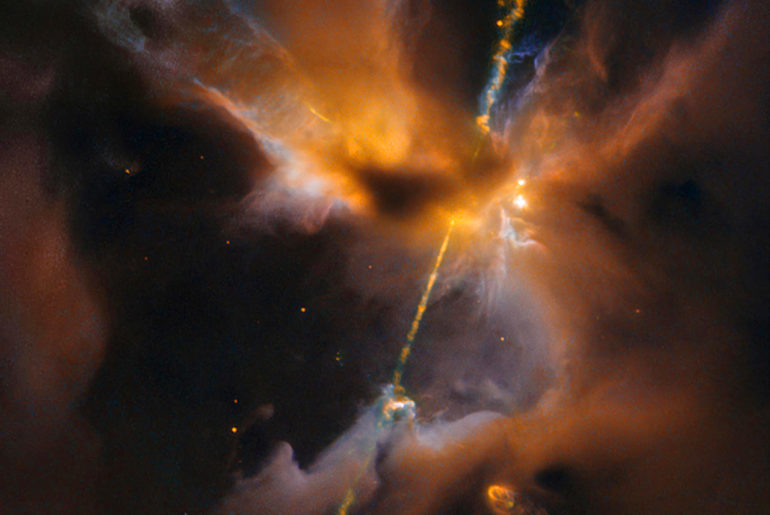
To close out May 4, 2021, NASA’s Hubble Space Telescope captured what appears to be a cosmic, double-bladed lightsaber. Upon closer inspection, you’ll see in the center of the image, a newborn star shoots twin jets out into space. What may surprise you is that his celestial lightsaber is actually located in the Milky Way Galaxy, inside a turbulent Orion B molecular cloud complex, located 1,350 light-years away.
This celestial lightsaber occurs because when stars form within giant clouds of cool molecular hydrogen, some of that surrounding material collapses under gravity, thus forming a rotating, flattened disk encircling the newborn star. Planets will later congeal in the disk, but at this early stage, the protostar feeds upon the disk with what you could call a Jabba-like appetite.
- Take time out and challenge your building skills to create a wonderfully detailed LEGO brick interpretation of a Star Wars Scout Trooper Helmet...
- The distinctive look of a Scout Trooper’s helmet is recreated in LEGO style, inspiring memories of Star Wars saga scenes, and the stand with a...
- This premium-quality set is part of a series of collectible LEGO Star Wars build-to-display helmet models – check out the new Darth Vader Helmet...
Science fiction has been an inspiration to generations of scientists and engineers, and the film series Star Wars is no exception. There is no stronger case for the motivational power of real science than the discoveries that come from the Hubble Space Telescope as it unravels the mysteries of the universe,” said John Grunsfeld, astronaut and associate administrator for the NASA Science Mission directorate.





